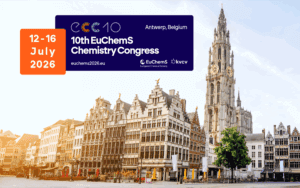“If some people think that ChatGPT is the end of development, I can assure them, it is just the start. There is a tsunami of innovations coming. This will have a massive impact on chemistry, but not just chemistry, everything.” – Markus Kraft said in a recent interview with Vera Koester for ChemistryViews. He is a Professor at the University of Cambridge, UK, and Director of CARES, the Cambridge Centre for Advanced Research and Education in Singapore. In the interview, he discusses his World Avatar project, explains the concepts of knowledge engineering and machine learning, highlights their applications in chemistry, and shares insights into major challenges and successes of using AI.
The World Avatar (TWA) project is a knowledge-graph-based world model that pursues the idea of mapping every aspect of the real world into a digital “avatar” world. The idea is to create digital twins that can describe the behaviour of any complex system. This approach enables data-driven decision-making to optimise these systems. TWA can be considered an ecosystem of interconnected digital twins (cTW).
To support research in chemistry, he and his team have developed a series of ontologies (maps of concepts that help to organise information) that cover various chemistry domains, such as chemical species, kinetic mechanisms, computational chemistry, physical experimentation, and chemistry laboratories. Using TWA, they have, for example, simulated the effects of quantum calculations on the atmospheric dispersion of pollutants in Singapore, automated kinetic mechanism calibrations, and enabled the automated rational design of metal-organic polyhedra (MOPs). Other aspects include laboratory automation, building management, smart city operations, climate resilience, and national energy scenarios.
Read full article https://doi.org/10.1002/chemv.202300029



